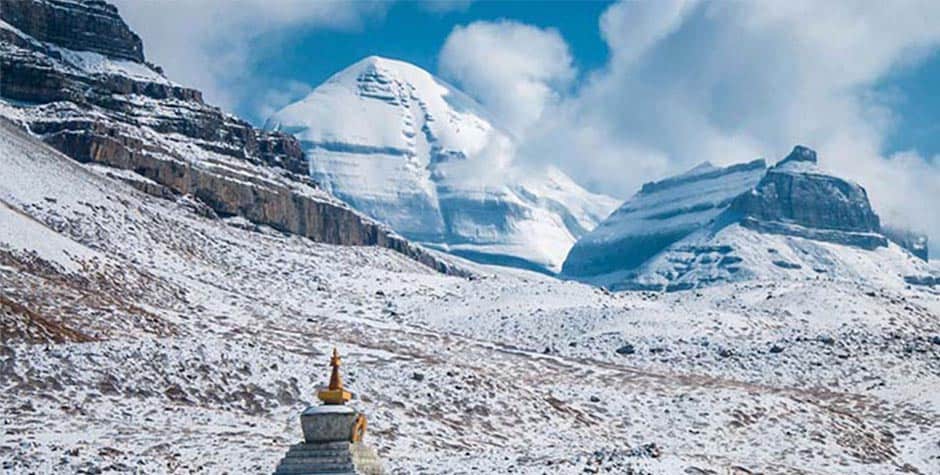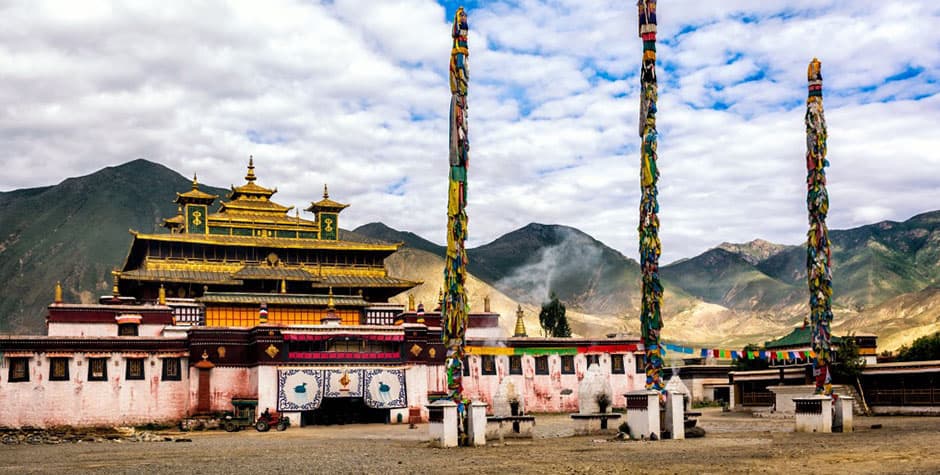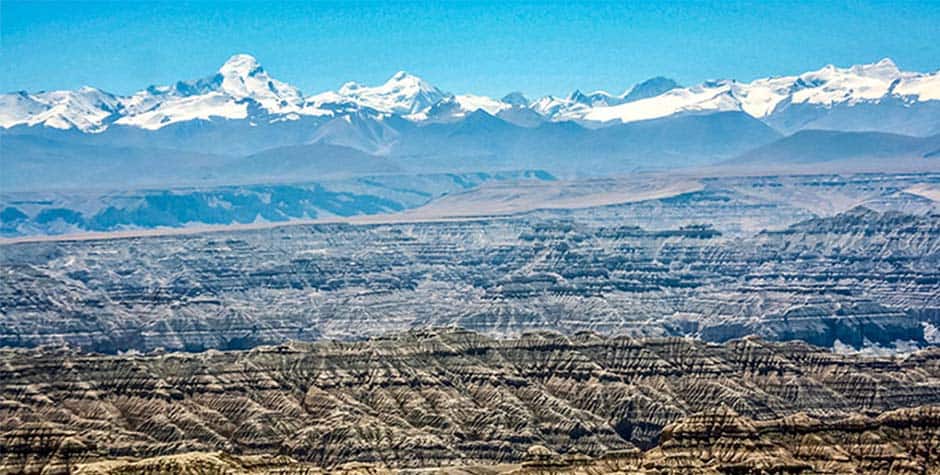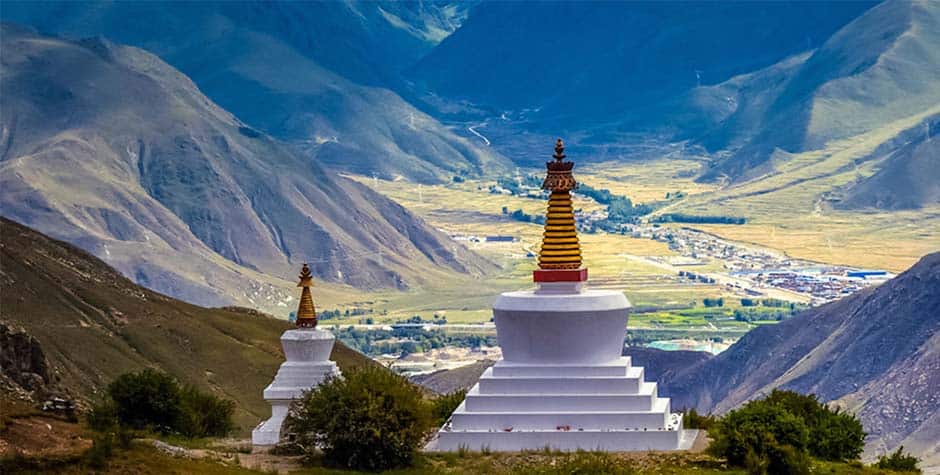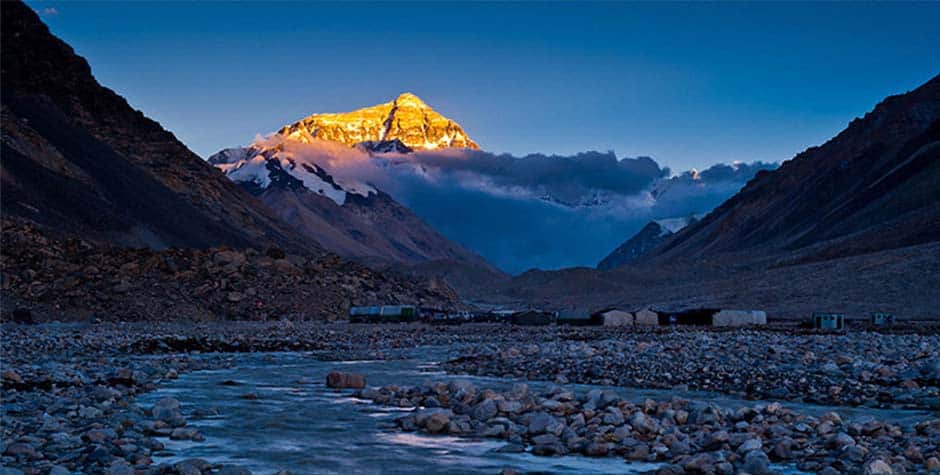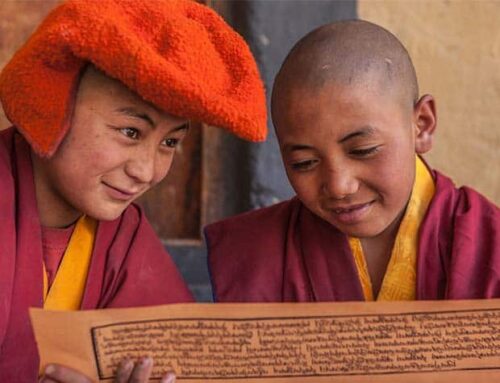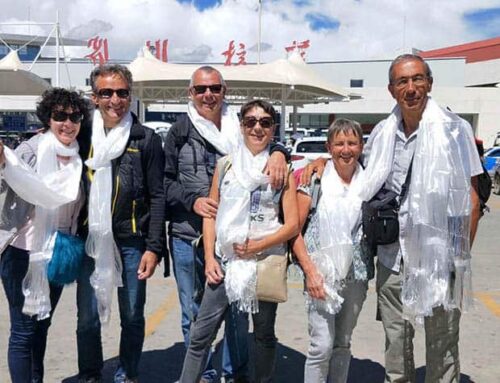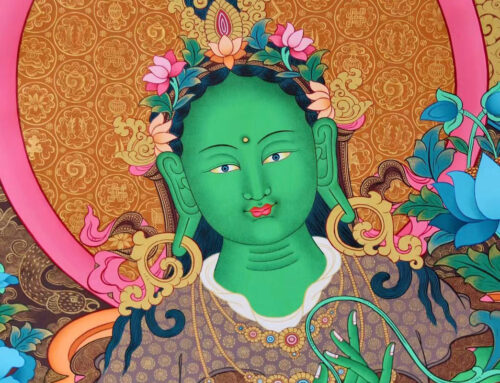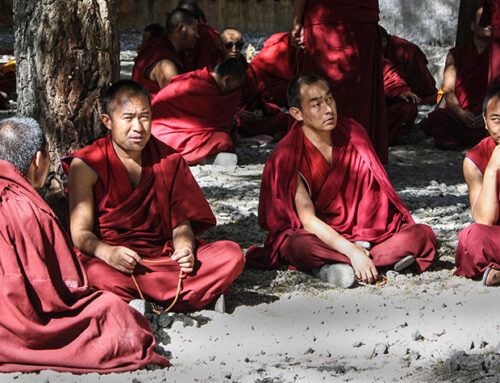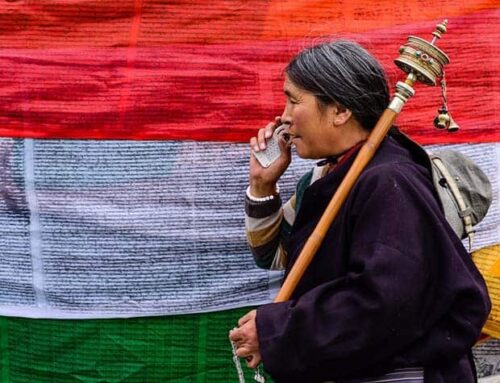Tibetan Food or Food in Tibet is unique and special because of its high altitude. It is made memorable because of its isolation by the geographical setup. While you are on your tour to Tibet, we think it is essential to know about and try a Tibetan diet.
Many of our foreign friends, especially those who belong to the conservative religious background, must understand information and some ideas about what local Tibetans are eating. We think this will help you make an informed decision about where to eat and what to order.
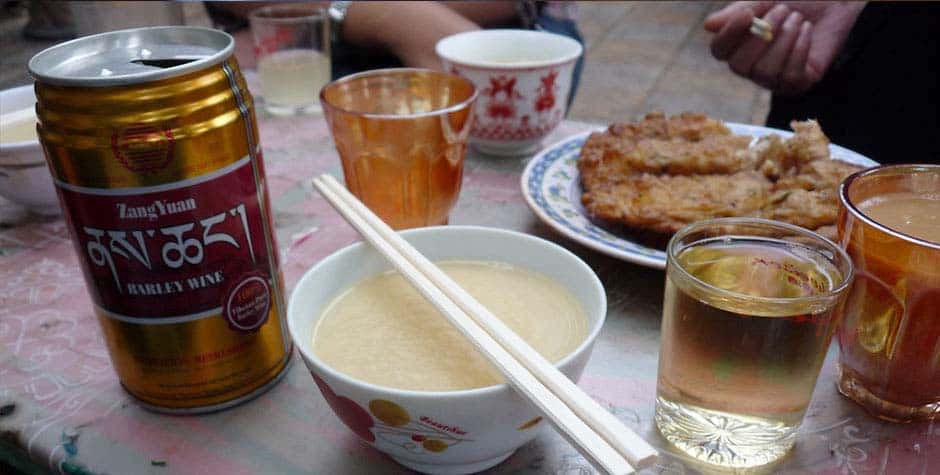
The following are the most prominent stable Tibetan foods or foods in Tibet.
Tsampa
Tsampa is the primary staple food in Tibet, or A staple Tibetan Food. It is a flour of roasted Barley or beans. Since it is roasted, it is already cooked, and there is no need to cook it again. We can safely be called the world's first fast food.
According to some archaeologists, tsampa is deeply rooted in our Tibetan civilization, about 4000 to 5000 years old. Some archaeological evidence proves this concept, which tells us we Tibetans have been consuming Tsampa since historical times. In our case, it’s an everyday breakfast, and our older generation encourages us to eat Tsampa every morning as a part of conserving our culture.
You can eat Tsampa in the following three different ways.
Pak
One is by making the stiff dough of Tsampa, Pak is not a cake. You will mix the Tsampa with tea in the bowl using your hand or a small leather pouch called Thangku. Either way, you will mix it using your hand and squeeze it in your hand before eating it. Many locals and tour guides prefer to call it a Tsampa cake, but the cake is a Western delicacy, and we would not use it to understand our culture clearly. Western doesn’t have such a culture, so we prefer to use our Tibetan teams. So Pak is Pak, not a cake.
When we make pak lavishly, we put a piece of butter, a small amount of dried cheese, sugar, and Tibetan tea. You either mix it using the leather pouch called Thangku or mix it with your hand, putting the mixture in a cup.
For the beginner, I suggest eating it in a leather pouch. If you visit a rural nomad family, it is common to see the head of the family making a pak in the Thangku (the leather pouch). This also signifies dependence in the family. If you visit the families in the village or town setup, you will commonly see people using the cup and their bare hands to make pak.
Jamthu
Another way of eating Tsampa is called Jamthu, which means smooth. In Jamthu, all the ingredients are the same, yet the amount of tea is more, and we mix the mixture into a soup or a diluted form. This way of eating Tsampa is mainly used when feeding our babies and young ones, and, in my case, when we are busy chewing the hard pack.
Dry Tsampa
The last way of eating Tsampa is by eating the dry Tsampa flour and drinking tea after tea. It requires excellent skills and experience. If you are going to try it, please have something to drink quickly after popping it in your mouth, preferably lukewarm water.
We would not encourage eating Tsampa in this way as it might choke you. In our communities and family, older people love to have Tsampa that way. They would like to have a pot of Tsampa on the table all the time and pop in a spoonful as a snack before sipping a tea.
Eating Tsampa in a restaurant
If you go to a Tibetan cuisine restaurant in Tibet now and order Tsampa, there will be a ready-made park. They would call it Tsampa cake. If you order the ready-made pack, you will miss the fun of making the pack yourself. We suggest you ask your guide to take you to a Tibetan family restaurant in Chushul County near Lhasa. You will most likely pass by that village on our way to Shigatse from Lhasa or Lhasa from Shigatse.
You can wear Tibetan cloth in those family houses, and your host will show you how to make a pak. It is great fun visiting those family restaurants. But you might want to avoid the busy tourist season to have more excellent delight in the family house.
Tibetan Tea
We Tibetans are very fond of drinking tea, so it's important to know about Tibetan teas in this guide to Tibetan food. We have an old saying, “It’s pure happiness if we have a smooth tea every morning.” There are a few kinds of tea: butter tea, black tea, milk tea, and sweet tea.
Yak Butter Tea
Butter tea is a tea made by mixing tea with butter. It will be fatty and salty. It surprises many of you visiting friends in Tibet, as most presume that the tea is sweet, but not all of them are. In this case, it is salty. This is to have if you are having Tsampa in any form.
Traditionally, we used to mix the tea and butter in our mixer, Dongmu. It’s a wooden piston in a wooden pile, where one end is locked. The tea maker will pull up and push down the piston from the unlocked side to the pipe to mix the tea and the butter. Please be cautious, as some tea might be very salty for you. But if you visit the house or nomad, how do they make their butter? Go for it. It’s worth having the taste of it.
Black Tea
Black tea is like afternoon tea, when a family finishes the butter tea made in the morning. This tea is also salty. Many restaurants offer black tea as soon as you enter the restaurant before you order your food. If they offer without you asking, it’s free, but if you ask for it, you will have to pay for it. We must have something hot to drink half an hour before we eat in our Tibetan medicine concept. This helps to warm up your stomach before you eat. So, many restaurants offer you something to drink before you eat.
Milk tea is another Tibetan tea style from the Amdo region of China, popularly known as Qinghai. The drink looks just like chai or sweet tea, but it is not salty or sweet. It is popularly known as Amchai, which means Amdo tea.
Sweet Tea
Sweet tea is trendy in Tibet now. We prefer to call it the latest generation of tea in Tibetan history. We don’t know about its origin in Tibetan society, but we are sure it’s not a local origin. I believe sweet tea was borrowed from India during the dawn of the British Empire in India. Now, it has become dominant in Tibetan daily culture.
Popular Tea house in Lhasa
There are many popular tea shops in Lhasa. Gum Chung, Ani Tsangku, and Zetro are the most popular in Lhasa. These three tea houses have become a must-visit place for many Domestic travellers. We always encourage our guests to spend some time in the chatter of hundreds of people in the house while sipping tea. Another funny thing about Tibetan tea culture is that tea is not commonly sold per cup. You can buy a tea base of a thermos pot from one to five. The number one pot contains about one litre of tea. Once, a foreign guest asked a guide if it was a factory upon seeing lots of bicycles parked outside the tea house.
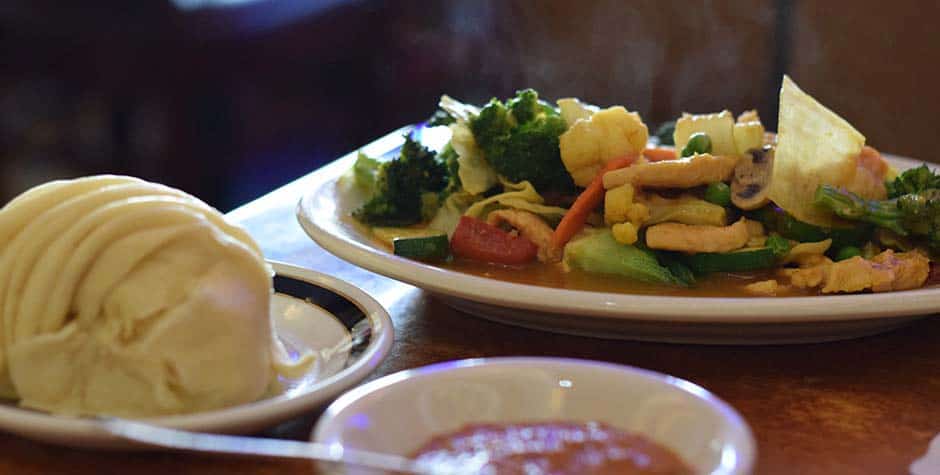
Eating Meat
Any traveller who has never had any experience of the Tibetan community makes this assumption. Yes, we are Buddhists, and most Tibetan Food consists of meat. We live in the highest place in the world, where traditionally, we do not have good vegetation. We are an average of 4000 meters above sea level.
Meat is the only staple food after Tsampa. This is why we find meat on our dining table. Many people skip eating meat on the 8th, 10th, 15th, 18th, 20th, 25th, 28th, and the last day of the Tibetan lunar calendar because these dates are considered auspicious in your astrology.
But tradition, we are only allowed to consume animals with a hoof. We are not allowed to eat any plates of seafood, chicken, or any other meat. There is only one fishing village in Tibet, and people from that village can eat fish.
Yak beef is the dominant meat in our society. You are likely to eat Yak meat whenever you eat a meal at a local restaurant. It is a must for travellers with Hinduism or any religion that prohibits you from consuming meat. It is better to tell the tour guide and ask them to take you to the vegetarian restaurant. Vegetarianism is an emerging trend in our society. You will indeed find a vegetarian restaurant in every town in Tibet.
We do consume lamp meat, but on infrequent occasions. Lamb meat is more expensive than Yak beef. Suppose you go to the Tibetan Muslim area of Lhasa. You can enjoy a good lamp.
Noodle
Noodles are a must-have Tibetan food in Lhasa. If you meet a local friend, they will ask you to go for sweet tea or noodles. But it means the same; you are likelier to have noodles and sweet tea. Both are sold in tea shops or at local restaurants. We always suggest that all my clients go for tea and noodles in the local restaurant while they are here. You will know the feeling when you sit with other locals and drink tea with a welcoming, smiling face.
There are many kinds of Noodles in Tibet. Being on the world's highest plateau, our ancestors developed excellent noodle-making skills. Noodles warm up your body before going to bed. For our family, it is almost a typical winter dinner. The most common noodles in the market are Bhoe-thuk, Lup-thuk, and tro-mei.
Bhoe-thuk
Bhoe-Thuk is the most common dish in every tea house and a must-have for everyone. It is about two millimetres thick. This noodle is cooked, and when it is served after being dipped in a boiling meat soup. You must try this noodle in Tibet, and please try it. You will have more of it.
Lup-Thuk
Lup Thuk is the specialty of the Lupu area in Lhasa. The noodles are very thick, and sometimes, you feel like the noodle is not adequately cooked. You will not get it everywhere, as it is under the copyright of a local co-operative that invented it. You will have to go to a particular restaurant to have it. You would likely like it on the first try, but if you have room for the second try next, you will love it better than the previous visit.
Tro-Mei
It is the specialty of the Amdo region. It is more of a taste of tomato. If you want to try it out, the best option is to go to Amdo restaurant. This noodle has a close tie with the Hui people. There are next to Tibetan in the region.
Point of pointer about Tibetan Food
- All our Tibetan food is a little salty for the outsider. This has something to do with the high altitude.
- Tibetan Yak butter tea is Salty, not sweet.
- In most local stores, you might have to pay while ordering.
- If you want to try a local dish, ask your guide to refer you to a local Tibetan restaurant. Don't just ask for the restaurant. You might end up eating in a Nepalese restaurant.
- Lastly, we recommend you go to a local restaurant selling Tibetan food. When you ask about the restaurant, you can ask for an excellent Bho-Zey restaurant.
- Here is a guide to the best restaurants in Lhasa: Where can you eat in Lhasa?

Tenzin Travel is the best Tibetan Travel agency in Tibet. Our agency is one of Tibet's most experienced tour operators, with over 20 years in the industry. Founded by a local Tibetan family with decades of expertise as guides, managers, and route planners, we craft personalized itineraries for every traveler. We are highest rated and recommend Tibet travel agency in TripAdvisor, Google and LonelyPlanet.
Our Lhasa office is just steps from Barkhor Square, and our all-Tibetan team ensures deep cultural, linguistic, and religious insights, setting us apart from other agencies.
Beyond tourism, we support Tibetan communities by donating a portion of each tour to local projects. Your travel to Tibet is about more than profit—it's about opportunity for us to give back.


